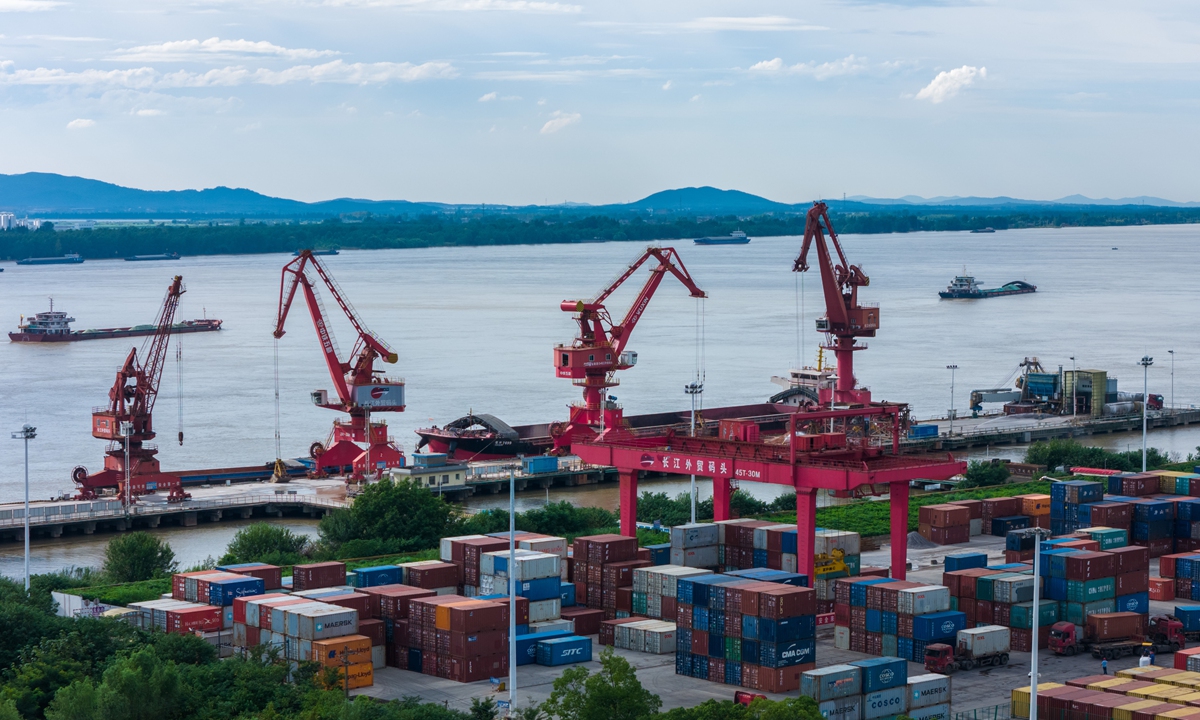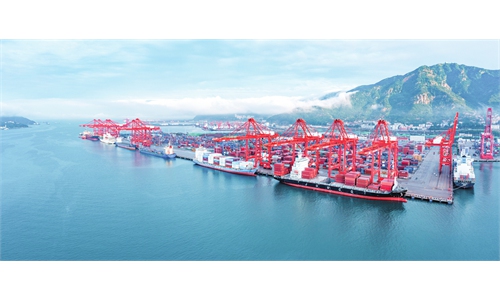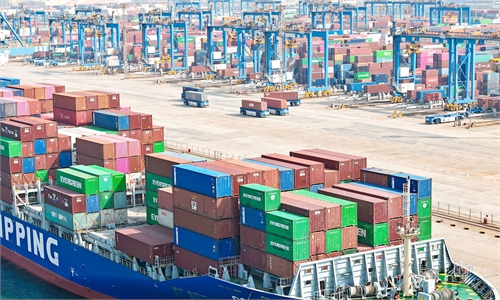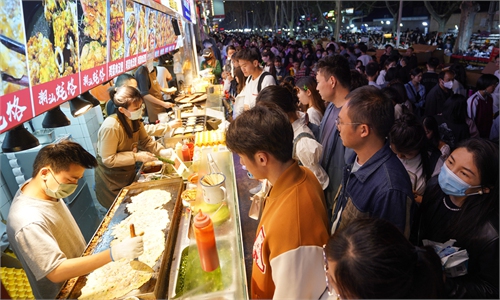H1 GDP of Chinese localities shows steady development, bolstered by thriving high-tech sector, robust foreign trade
Stable growth boosted by high-tech sector, foreign trade

Cargo is loaded and unloaded at the Tongling port in East China's Anhui Province on July 19, 2024. Tongling, a river port along the Yangtze River, has committed to port construction over recent years, contributing to the city's export-oriented economy. Photo:VCG
The Chinese economy in the first half of 2024 showed resilience and vitality, with upbeat GDP figures for many provinces and municipalities, fueled by favorable factors such as the thriving high-tech industry, robust foreign trade, an expanding services sector and growing investment.
Observers said the progress is likely to continue in the second half of the year, backed by firm policy support, continuous industrial upgrading and transformation, growing domestic demand and optimizing business environment.
The GDP of East China's Zhejiang Province grew by 5.6 percent to 4.09 trillion yuan ($562.59 billion), with an unexpectedly strong trade performance as one of the country's major trade hubs. The province's trade grew 7.8 percent year-on-year to 2.56 trillion yuan.
Beijing's GDP grew 5.4 percent to 2.18 trillion yuan, with continuous expansion by emerging industries playing a vital role.
The added value of the capital's strategic emerging industries rose by 12.9 percent year-on-year.
The GDP of Shanghai grew by 4.8 percent year-on-year to 2.23 trillion yuan, with the expanding services sector, growing leading industries and fast investment growth being the top three drivers. The added value of the city's tertiary industry increased by 5.8 percent.
The GDP of Southwest China's Sichuan Province expanded 5.4 percent to 2.95 trillion yuan amid the accelerated development of high-tech industries. The provincial added value of the high-tech manufacturing sector above the designated size increased by 6.9 percent.
The GDP in Southwest China's Chongqing Municipality rose 6.1 percent to 1.51 trillion yuan. The strong demand for digital, smart and green products from emerging sectors such as new-energy vehicles propelled the local economy.
These results showed that Chinese localities have promoted economic development through their industrial competitiveness and strengths, while actively guiding the advancement of new quality productive forces, Li Changan, a professor at the Academy of China Open Economy Studies at the University of International Business and Economics, told the Global Times on Sunday.
Stepped-up policy support for provinces and cities covering various sectors contributed to the steady economic growth, according to Wang Peng, an associate research fellow at the Beijing Academy of Social Sciences.
Wang told the Global Times on Sunday that the targeted policies safeguarded economic progress in the first half and will lay a solid foundation for the rest of the year.
The GDP announcements by local governments came along with the release of national first-half GDP data and the conclusion of the third plenary session of the 20th Central Committee of the Communist Party of China.
China's GDP expanded 5 percent to reach 61.68 trillion yuan in the first half of 2024. The stable growth has put China on a firm track to hitting its full-year economic growth target of about 5 percent as the fundamentals of the economy remain positive and are set to improve in the second half.
Global confidence in China's stable economic growth is unchanged. The IMF last week raised China's GDP growth forecast for 2024 to 5 percent in its latest World Economic Outlook, an upward revision of 0.4 percentage points compared with the April WEO report. HSBC said earlier that it expects China to achieve its annual GDP growth target of 5 percent.
There will be both opportunities and challenges in the second half, Li and Wang said.
They expect further enhanced policy support following the conclusion of the third plenary session last week, with more stimulus accompanying an active fiscal policy and a prudent monetary policy.
Wang also emphasized the nation's continuing industrial upgrading and transformation. Emerging industries will become indispensable engines for driving sound economic development, while the upgrading of traditional industries will help boost their competitiveness and market share.
Expanding domestic demand and optimizing the business climate will become standout drivers to propel economic development for the rest of the year.



